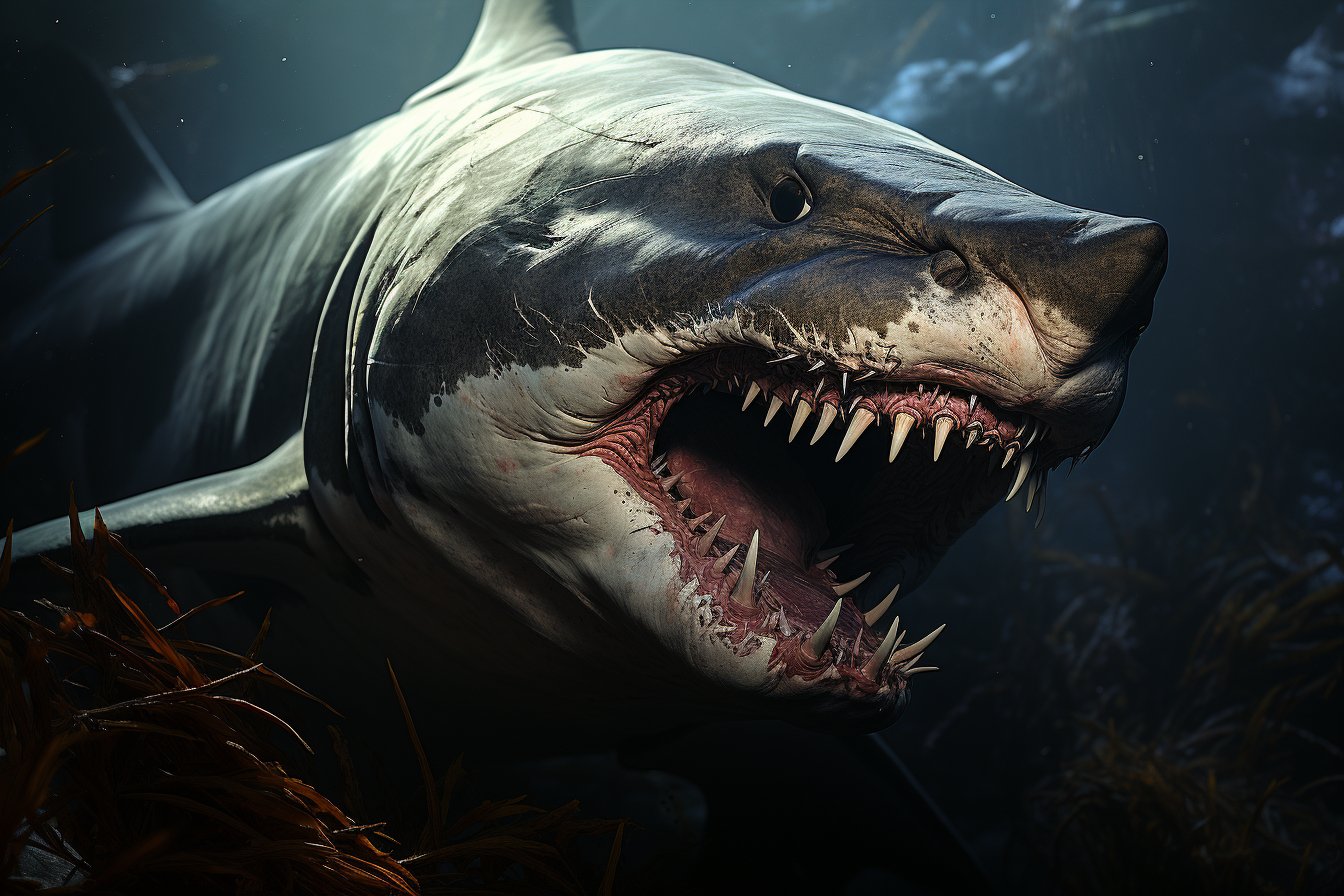When it comes to marine predators, some sharks have managed to acquire a fearsome reputation for their aggressive behavior. While not all sharks pose a threat to humans, there are certain species that demand heightened awareness and respect from those who encounter them. In this article, we will unveil the seven most aggressive shark species in the world:
- Bull Shark
- Great White Shark
- Tiger Shark
- Oceanic Whitetip Shark
- Blacktip Shark
- Shortfin Mako Shark
- Sand Tiger Shark
Uncovering their notoriously aggressive natures, habitats, and characteristics provides valuable insights into these fascinating creatures.
#1: Bull Shark – A Fearsome Marine Predator
Scientifically known as Carcharhinus leucas, the bull shark is believed to be responsible for more human attacks than any other shark species. The International Shark Attack File (ISAF) states that bull sharks account for many of the unprovoked attacks on humans along the coastline and in rivers. This aggressive shark measures an average of 7-11 feet in length and weighs between 200-500 pounds.
Bull Sharks’ Habitat and Feeding Habits
What sets bull sharks apart is their adaptability to both saltwater and freshwater environments, allowing them to frequent estuaries, bays, harbors, and even rivers. Additionally, they have no qualms about approaching shallow waters near human recreational areas, increasing the likelihood of unfortunate encounters.
Their hunting strategy involves a combination of camouflage and ambush, enabling them to lunge at their prey from within murky waters. The bull shark’s varied diet comprises fish, dolphins, turtles, crustaceans and smaller sharks. Their opportunistic feeding habits further contribute to their aggressive nature.
#2: Great White Shark – A Legendary Hunter
As one of the most popularized species in pop culture, featuring prominently in movies like Jaws, the great white shark is often portrayed as a bloodthirsty predator. This formidable creature’s scientific name is Carcharodon carcharias, and it measures an average length of 15 feet while weighing around 5,000 pounds.
The Lifestyle of Great Whites
Great white sharks can be found predominantly in temperate coastal waters around the world. These predators are known for their exceptional hunting skills, utilizing stealth tactics and powerful jaws filled with razor-sharp teeth. Their carnivorous diet primarily consists of seals, sea lions, large fish, and whale carcasses.
Despite their fearsome portrayal in media, however, great white attacks on humans are relatively rare. While their reputation may precede them, these predators usually do not pose a significant threat to beachgoers unless they mistake them for familiar prey items such as seals.
#3: Tiger Shark – The Resourceful Scavenger
‘Bold and resourceful’ is perhaps the best way to describe the tiger shark (Galeocerdo cuvier). Measuring an average length of 10-14 feet and weighing between 850-1,400 pounds, this species has gained a reputation as one of the ocean’s great scavengers.
Distinct Features of Tiger Sharks
Tiger sharks boast unique striped markings on their bodies, which become more accentuated in juveniles. These predators have an incredibly resilient digestive system that permits them to swallow and digest almost anything they encounter. As such, their staple diet encompasses sea turtles, birds, marine mammals, smaller shark species, and even human refuse like plastic bottles and car tires.
Their aggressive and curious nature makes tiger sharks the second most common species behind unprovoked attacks on humans after bull sharks. They are known to inhabit warm tropical waters and occasionally venture closer to shorelines during nighttime hours.
#4: Oceanic Whitetip Shark – A Wandering Nomad
An often-overlooked threat among open ocean dwellers is the oceanic whitetip shark (Carcharhinus longimanus). They typically measure 5-10 feet in length and weigh around 370 pounds. Known for their rounded dorsal fin with striking white tips, they were once abundant but now face declining populations due to fishing practices.
Habit and Feeding Preferences
Oceanic whitetip sharks predominantly roam pelagic environments; however, they have been known to wander close to shorelines in search of food. Their opportunistic feeding habits encompass tuna, mackerel, dolphin, squid, and other pelagic organisms. On occasion, they may resort to scavenging from shipwrecks or attacking unsuspecting swimmers.
Their fearless and bold temperament has earned them a reputation as one of the most aggressive shark species. According to ISAF, this solitary nomad of the high seas has been implicated in numerous fatal attacks on shipwreck survivors in World War ll.
#5: Blacktip Shark – The Cool Customer
Characterized by their slender bodies and prominent black tips on their fins, the blacktip shark (Carcharhinus limbatus) measures approximately 5 feet in length and weighs around 40 pounds. They are fast swimmers known for their highly acrobatic leaps and spins out of the water when pursuing prey.
Blacktips’ Preferred Habitat and Diet
Blacktip sharks prefer coastal waters along continental and insular shelves throughout tropical and subtropical regions worldwide. Their feeding habits consist primarily of small schooling fish; however, they will also eat squid and shrimp.
Although these creatures do not pose a considerable threat to humans, the ISAF reports that blacktip sharks are responsible for some unprovoked attacks, which are attributed to their inquisitive nature and tendency to mistake humans for prey items such as fish.







